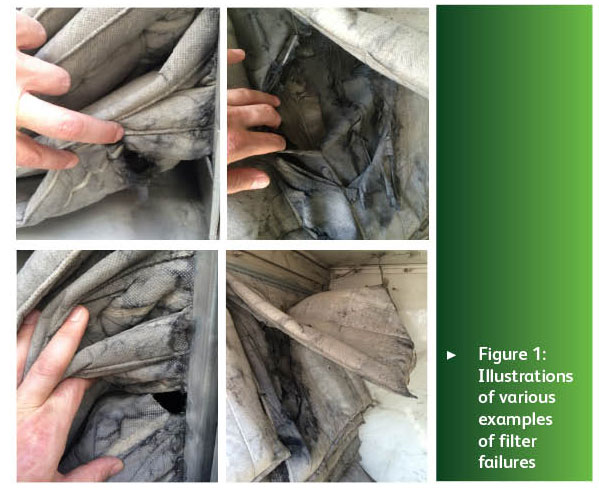
Image courtesy Dr Iyad Al Attar
In a recent trip to Alberta, Canada, the beauty of the Canadian Rockies stunned me and led me to wonder whether such an astonishing spectacle of Mother Nature would be preserved for my grandchildren to see and enjoy or not.
Climate change is a formidable challenge, as it involves multiple interdependencies and has an impact on ecological and human systems. Humans depend on resources, such as water, air, food and energy, and when the climate changes rapidly, the resources are threatened, since they are inextricably linked. Considering that the available resources on Earth can only sustain a billion people out of the entire population of 7.6 billion, we cannot continue to deplete our resources and abuse our planet indefinitely. Ironically, tougher emission regulations have had little impact on air pollution, yet the fast rate of climate change makes us believe that we are falling further behind on our environmental commitments.
There seems to be a discord between our desire and effort to combat climate change. We take the rising air pollution statistics sitting down. However, the increase in death rates, owing to polluted air, cannot be overlooked. Frankly, I begin to wonder what it would take to capture
our imagination and, eventually, our attention. The stagnant factor in the equation of climate change is our attitude towards it. While the consequences of our anthropogenic activities are self-evident, our actions are not self-executed. Relying single-handedly on tougher emission regulations to implement themselves will not do the job.
QUANTIFYING THE STATUS QUO

Dr Iyad Al Attar
Perhaps a good start to quantifying the status quo is to put the entire picture into perspective. Between 1750 and 2011, it is estimated that 50% of the cumulative anthropogenic CO2 was emitted between 1970 and 2010. Statistics have shown that the oceans have absorbed about 30% of the emitted anthropogenic CO2, resulting in their acidification. During the same period, emissions of CO2 from fossil fuel combustion and industrial processes contributed to about 78% of the total increase in greenhouse gas (GHG) emissions. It is evident we are not only burning fossil fuels irresponsibly but are also using energy excessively. Therefore, smart methods must be sought to allow societies to be more accountable in terms of energy use. A parallel approach to reducing emissions is essential in terms of controlling the sources and treating the inevitable emissions. The rising tide of air pollution, accompanied by rapid population growth, industrialisation and urbanisation, has caused a surge in the demand for clean air.
THE ROLE OF FILTRATION IN PROVIDING CLEANER AIR
Air filtration is certainly unappreciated in the context of being able to provide clean air, considering it is a capable tool for capturing various contaminants within a wide range of concentrations. Existing perceptions of better air quality, and the critical role of filtration to enhance it, lack precision and comprehensive understanding. If we all agree that attaining better air quality is made possible due to the advanced filtration technologies available today, then we ought to abolish the vintage filter selection mindset and open our minds to filtration plans – otherwise, we will continue to miss the opportunities of capitalising on the latest filtration technologies. Further, our perception of air filtration technologies as possibly the sole provider of clean air has not yet matured.
I believe it is fair to link the capabilities of filtration technologies with the current air quality we are breathing. Spotting little or no visible particle settlement on air diffusers does not prove that the air quality requirements have been met. If we place equal emphasis on air quality and heat-load removal, filtration technologies can be better employed and financially justified. Remarkably, the daily cost of inhaling better air quality through professional filtration is small enough to borrow from the pocket money we give our children.
From an application perspective, we need a compelling incentive programme to enhance air quality, as there are no awards or accolades
for either manufacturing craftsmanship or for installing sustainable professional filtration solutions. In addition, we must be empathetic to
our maintenance team and care about them as much as we do about our indoor air quality. Frankly, no one enjoys the agony of subjecting their bodies to high temperatures and humidity levels and of inhaling contaminants during maintenance procedures. They must be trained, appreciated and equipped with the latest and greatest tools and uniforms to stand tall while exposed to such harsh work conditions. To have a candid assessment, physical and chemical characterisation of the filtered indoor air is essential to relate the success of facility managers, their filter selection and the associated onsite maintenance practices, such as appropriate installation. The ensuing deterioration of indoor air quality mandates an investigation of the filtration plan, filter selection (as shown in Figure 1) and the rationale behind them.
All that I am asking for is to be ambitious in striving for the best air quality ever. However, how can we demand clean air without having done any filtration-related homework to gain it? If our only weakness is the limited access to air quality measurement, let’s make such instruments affordable and link them to our smart phones to stay informed. If indoor space users can have the upper hand in initially recognising the risks
and interpreting the indoor air quality characteristics their loves ones are exposed to, we are opening the doors to a game-changing situation. If facilities management teams in shopping malls, for example, are confident they have executed their professional filtration plans and appropriately selected filters, why not let the sunshine in and allow visitors to have access to the current air quality they are being subjected to? We spend extended leisure time in shopping malls as we seek refuge from the oppressive heat, sandstorms and high humidity. Therefore, it is imperative that the indoor air quality be granted the same attention that is given to the shiny marble flooring at the entrance of the mall. If the spirit to enhance air quality is willing, the body to execute it cannot be weak. The yardstick of smart shopping malls cannot be rated by, and only limited to, free and fast Wi-Fi connections and the plethora of easily available international cuisines. The pressing issue of sustained better indoor air quality has got to be a major factor in the success equation, which requires a well-designed filtration plan, executed by certified filtration experts.
In an era where face recognition has superseded conventional passwords in recently introduced smart phones, obtaining the best air quality should be widely accessible. What we see, instead, is that conventional air filters are being specified in prospective projects and are able to easily make their way into future HVAC systems. These practices reinforce the notion that advanced filtration technologies continue to be undermined and suggest that their well-pronounced influence do not hang on the thermal comfort balance.
 The situation begs the question: ‘How can we implement the findings of research and development, if our perception of the importance of clean air and the sole role filtration can play have not yet matured?’ Combined inappropriate practices and filter selections have led to the status quo of poor air quality. How can we progress if the only common filter requirement is whether or not it can be regenerated (washable)? Or, if the specifications are limited to dimensions and murky colour code that are rarely, if ever, adhered to? When filtration faults are turned into virtues, filter plans and selection for filtration-sensitive applications miss the opportunities of enhanced filtration technologies. Numerous scientific findings suggest that various air contaminants are the common denominator of many negative health effects. Further, recent research has suggested a correlation between infertility and unexplained failed pregnancy, on one side, and the deterioration of air quality, on the other.
The situation begs the question: ‘How can we implement the findings of research and development, if our perception of the importance of clean air and the sole role filtration can play have not yet matured?’ Combined inappropriate practices and filter selections have led to the status quo of poor air quality. How can we progress if the only common filter requirement is whether or not it can be regenerated (washable)? Or, if the specifications are limited to dimensions and murky colour code that are rarely, if ever, adhered to? When filtration faults are turned into virtues, filter plans and selection for filtration-sensitive applications miss the opportunities of enhanced filtration technologies. Numerous scientific findings suggest that various air contaminants are the common denominator of many negative health effects. Further, recent research has suggested a correlation between infertility and unexplained failed pregnancy, on one side, and the deterioration of air quality, on the other.
In addition to safeguarding human health, highly permeable air filters can tremendously benefit land-based gas turbines, if designed smartly. Other emerging applications and concepts that rely heavily on filtration technologies include, but are not limited to, aerospace, industrial processes, the food industry, sewage plants, data centres, airports, healthcare centres and the ever-emerging portfolio of Green Buildings.
Clearly, advanced filtration technologies provide a great promise of providing cleaner air, but we ought to be ready, willing and able to pay the associated price to attain it. The cost may not necessarily be the monetary value but the price of raising the bar of our environmental conduct
to smart and responsible levels. The price for such promise lies first in realising the value filtration can bring about to the deteriorated air quality around us.
GETTING IT RIGHT!
To a large measure, the degradation of the environment is a manifestation of our behaviour, lifestyles, and the horrendous ways in which we generate and use energy. Therefore, if we want our children to continue to enjoy that early morning chirping of birds, our environmental practices must be immediately tweaked. I truly believe the desire to get things right is there. However, having the desire alone is not enough to steer our actions in the right direction. While the challenges we face are great, and the work before us is difficult, our children are anticipating a planet that is much cleaner than the one we inherited.
THE FUTURE IS NOW
How can we make progress towards saving our planet, if we mistake the courtesy shown by the environment for consent, and our movement to combat climate change for achievement? The objective is not just to gather in a conference to address the underlying reasons of our status quo while having a drink but to execute solutions to ease pressure on our environment.
Designing virtual – not actual – road maps will prevent us from making progress and further scar our planet. Prior to demanding a cleaner environment and better air quality, we ought to realise that duty precedes desire, hard work foregoes harvest, progress demands efforts, and achievement necessitates determination, not procrastination. In my judgement, there is no difference between never starting to save our environment and never finishing – the result is the same. If our personal wisdom fails to dictate to us how to establish mechanisms to bring humanity closer to the solutions rather than the problems, then what use the wisdom? Ultimately, continuing to hang our polluted hats on the environment is no longer an option. Indeed, establishing an intrinsic understanding of the status quo begins with realising that escalated climate change effects are undeniable, clean air is limited and rare, our planet is tired, our lungs are polluted, guidelines are still evolving, our actions are lagging but our future is now.
Copyright © 2006-2025 - CPI Industry. All rights reserved.